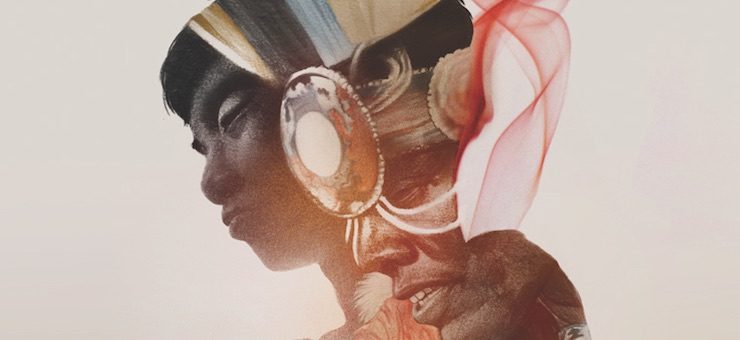Let’s face it, Native Americans/First Nations characters don’t show up very often in mainstream science fiction and fantasy stories, and when they do, they’re often plagued by stereotypes. They’re monosyllabic mystics, stuck in the 1800s, or they’re relegated to laconic (a.k.a stoic) warriors in horse cultures, or, even worse, erased from the continent entirely.
I’m not sure why the Indigenous people of North America fail to evolve in the imagination of science fiction and fantasy writers. Why we get trapped in the amber of yesteryear, never to break out of notions of noble savagery, braids, and loincloths. In a field known for its creativity, science fiction and fantasy has let its readers, Indigenous and non-Indigenous, down. But I am happy to say this is changing, and it’s mostly changing because readers are getting to hear a lot of great Indigenous voices telling their own stories in the genre. From novels to short fiction to comic books, Indigenous writers are claiming speculative fiction as their own, weaving original worlds that critique colonialism or simply tell a great story that don’t necessarily engage European conquest at all.
I’ve rounded up five speculative fiction books written by Indigenous to the Americas authors that I think everyone should read. Each one tells a story about our continued existence now and into the future.
The Marrow Thieves by Cherie Dimaline
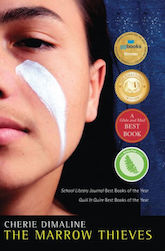 The Marrow Thieves has won a ton of awards in Canada and the United States, including the coveted Kirkus prize for 2017, and for good reason.
The Marrow Thieves has won a ton of awards in Canada and the United States, including the coveted Kirkus prize for 2017, and for good reason.
It’s a YA novel set in a dystopian future where the non-Indigenous population have lost the ability to dream. Indigenous people can still dream and they are hunted by government goon squads for the marrow in their bones, which is used to make a dreaming cure. Our protagonist is a boy named Frenchie who meets up with a ragtag crew of other Indigenous people on the run as they all head north to the places rumored to be safer than the cities. Each crew member has their own story of horror and survival and loss, but together they are strong.
It’s a beautifully written but exceedingly creepy tale that mirrors almost too closely the very real exploitation of natural resources on Indigenous land and the history of forcing children into boarding schools to force assimilation and destroy their culture. Not everyone makes it out alive, but the story still manages to resonate with hope and found family.
Dimaline also has another YA novel from 2013 called The Girl Who Grew A Galaxy about a girl whose emotions become planets that circle around her head. I haven’t read it yet, but it’s going on my TBR.
Mapping the Interior by Stephen Graham Jones
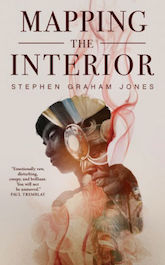 Stephen Graham Jones is a prolific and award-winning horror writer. His contemporary werewolf novel, Mongrels, made a handful of Best of lists in 2016 and was nominated for a Bram Stoker and a Shirley Jackson award.
Stephen Graham Jones is a prolific and award-winning horror writer. His contemporary werewolf novel, Mongrels, made a handful of Best of lists in 2016 and was nominated for a Bram Stoker and a Shirley Jackson award.
But the work I love, and I’m recommending today, is his Tor.com Publishing novella, Mapping the Interior, which won the Bram Stoker award for 2017. This story is told primarily from the perspective of a twelve-year-old boy whose dead father has come back to life as a ghost. But any benevolence on the part of the ghost is quickly put to rest as the boy realizes his father has returned for his own purposes, and they aren’t good. It’s a story about fathers and son and cycles of violence, but it’s also a tense and creepy old-fashioned haunting that had me putting down the book a few times to take a breath when things got too intense.
That’s not a complaint, by the way.
Graham’s voice is powerful and immediate, and I love the details in his work and his turn of phrase that rings so familiar to me as both a Texan and an Indigenous woman.
Robopocalyse by Daniel Wilson
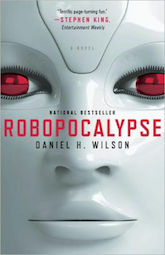 While the premise of Wilson’s book may sound familiar, it takes on new life in Wilson’s superior storyteller hands. Having a PhD in Robotics probably doesn’t hurt, either.
While the premise of Wilson’s book may sound familiar, it takes on new life in Wilson’s superior storyteller hands. Having a PhD in Robotics probably doesn’t hurt, either.
Fast-paced and thrilling, this story of robots taking over the world is told in a montage of first-person accounts and lost camera footage from various corners of the world. But the heart of the story, the place where rebellion begins and ends, is Osage land. In Wilson’s world, the things that might be seen as drawbacks to reservation life, e.g. lack of technology and traditional ways, become humanity’s strengths, as the war between man and machine escalates into a final battle. Robopocalypse is a lot of fun, but also a lot of smart.
Wilson is also pretty prolific and his works include a sequel to Robopocalyse called Robogenesis, a recent novel The Clockwork Dynasty and a new anthology of short fiction called Guardian Angels and Other Monsters.
Love Beyond Body, Space and Time edited by Hope Nicholson
 Chihuahuas in space, boys who transform into hummingbirds, cyborgs and legends in the making await you in this collection of Indigenous science fiction and urban fantasy focusing on LGBT and Two-Spirit characters. There’s such a great mix here of heart-breaking and heart-warming and a lot of truth-telling in-between from voices that rarely get heard in the genre. Some of the standout favorites for me were Darcie Little Badger’s “Né łe” and Richard Van Camp’s “Aliens.”
Chihuahuas in space, boys who transform into hummingbirds, cyborgs and legends in the making await you in this collection of Indigenous science fiction and urban fantasy focusing on LGBT and Two-Spirit characters. There’s such a great mix here of heart-breaking and heart-warming and a lot of truth-telling in-between from voices that rarely get heard in the genre. Some of the standout favorites for me were Darcie Little Badger’s “Né łe” and Richard Van Camp’s “Aliens.”
Deer Woman: An Anthology edited Elizabeth Lapensée and Weshoyot Alvitre
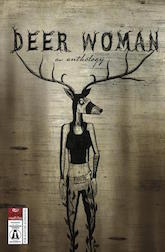 It may be cheating a bit to recommend this graphic novel because I have a short flash piece in this collection, but don’t read it for me. Read it because it’s a collection of short fiction and comics written by and about Indigenous women reinterpreting and reinventing the Deer Woman legend. The imagery varies from the violence of Deer Woman taking revenge on behalf of victimized women to Deer Woman inspiring a lesbian couple to stand up to the literal arrows of micro aggressions. It’s in turns lush and darkly violent and truly my aesthetic.
It may be cheating a bit to recommend this graphic novel because I have a short flash piece in this collection, but don’t read it for me. Read it because it’s a collection of short fiction and comics written by and about Indigenous women reinterpreting and reinventing the Deer Woman legend. The imagery varies from the violence of Deer Woman taking revenge on behalf of victimized women to Deer Woman inspiring a lesbian couple to stand up to the literal arrows of micro aggressions. It’s in turns lush and darkly violent and truly my aesthetic.
A portion of the proceeds go to funding an organization that teaches Indigenous women self-defense. This is an important cause as one in three Indigenous women are victims of violence, and thousands of Indigenous women go missing every year, a horrific fact most people outside of Indigenous communities aren’t even aware of.
 Rebecca Roanhorse is a Nebula Award-winning speculative fiction writer and a Hugo/Sturgeon/Locus Award Finalist for her short fiction, Welcome to Your Authentic Indian Experience (TM), and a 2017 Campbell Award Finalist for Best New SFF writer. Her debut novel Trail of Lightning, book #1 in the Sixth World Series (Saga Press) drops June 26th, 2018. Book #2, Storm of Locusts, will follow in 2019. She also has a middle grade novel coming in 2019 from Rick Riordan Presents, titled Race to the Sun. And in 2020, an Anasazi-inspired epic fantasy Between Earth and Sky (Saga Press). She lives in Northern New Mexico with her husband, daughter, and pug.
Rebecca Roanhorse is a Nebula Award-winning speculative fiction writer and a Hugo/Sturgeon/Locus Award Finalist for her short fiction, Welcome to Your Authentic Indian Experience (TM), and a 2017 Campbell Award Finalist for Best New SFF writer. Her debut novel Trail of Lightning, book #1 in the Sixth World Series (Saga Press) drops June 26th, 2018. Book #2, Storm of Locusts, will follow in 2019. She also has a middle grade novel coming in 2019 from Rick Riordan Presents, titled Race to the Sun. And in 2020, an Anasazi-inspired epic fantasy Between Earth and Sky (Saga Press). She lives in Northern New Mexico with her husband, daughter, and pug.










